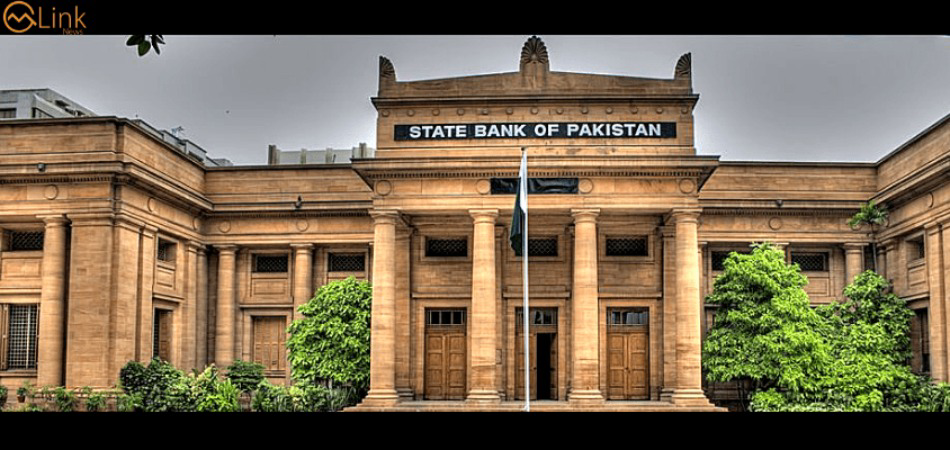5,000 Rs Notes - An Unnecessary Evil?

MG News | February 02, 2021 at 01:48 PM GMT+05:00
February 2, 2021 (MLN): Demonetization has become a new hot topic in the country recently, all thanks to the continuous insistence by the former Chairman of the Federal Board of Revenue (FBR), Shabbar Zaidi who is leaving no stone unturned in justifying why it’s the right time for Pakistan to go for it.
Before divulging into the details of what Shabbar Zaidi has been insisting upon, it is important to understand what demonetization means and under what circumstances it is implemented. Going by the basic definition, demonetization is the act of stripping a currency unit of its status as legal tender. This results in the current form of money being pulled from circulation, which is often replaced with new notes or coins, or even new currencies.
While the most common cause of demonetization is a change of national currency, it is also used for controlling money laundering, tax evasion, and other forms of financial crimes. Despite having lots of negative connotations attached to it, some countries have used demonetization as a tool for controlling hyperinflation, facilitate trade, or form currency unions (for example EU).
No matter what the reason, removing the legal tender status of a currency is a decision that is required under exceptional circumstances, because it directly affects the medium of exchange used in all economic transactions. In other words, demonetization is a huge gamble - it can either help stabilize the existing problems or create serious chaos in an economy.
In Pakistan's context, it is difficult to ascertain whether this is the right time to go for demonetization. According to Shabbar Zaidi, empirical independent research suggests that there are around 72,000 outlets for informal banking in the country that use Rs. 1000 and 5000 notes. Moreover, these outlets indulge in the trading of commodities, real estate, as well as lending activities without any direct supervision from central authorities.
He believes that if Rs. 5000 notes are demonetized, after announcing a transition period of at least two months to alert the public, the economy will improve as the banking sector will proposer, bribery will be made difficult and bullion trading will be monitored.
| Country Name | Indicator Name | GDP per capita 2020 | GDP (Local Currency) | Highest Denomination Currency Note | GDP per capita per highest denomination currency note | GDP per capita per highest denomination |
|---|---|---|---|---|---|---|
| Pakistan | GDP per capita (current US$) | 1,130.00 | 181,398,90 | 5,000 | 36.28 | 36.28 |
| United States | GDP per capita (current US$) | 63,051.00 | 63,051.00 | 100 | 630.51 | 101,215.77 |
| United Kingdom | GDP per capita (current US$) | 39,229.00 | 28,637.17 | 50 | 572.74 | 126,261.28 |
In a quest to further justifying his claims, Shabbar Zaidi shared a table wherein he linked the GDP of economically well-to-do countries, the USA and the US, with their respective highest currency denominations and compared it with Pakistan. In the table that is given above, GDP per capita per highest denomination of Pakistan is way less than that of the other two countries, thus signifying that having a currency denomination of 5,000 is undervaluing the actual worth of the country.
In an interview given to Dunya News recently, Shabbar Zaidi said when Rs. 5000 notes were issued back in 2006, no such economic justification was provided except that it would save printing charges. He said that undocumented economy has widened significantly after the introduction of 5000 notes and continues to do so.
In response to this, the Chairman of Arif Habib Group, Mr. Arif Habib said that while there was no substantial justification for its issuance, there is no justification for discontinuing the note either. The demonetization of 5000 notes will shake the economy and mitigate the efforts of the state to bring it on track. Moreover, people will start putting their money in dollars if they are asked to submit their 5000 notes to the State Bank, once again causing the rupee to devalue. He said there are many other options that can be used to document an economy, not just demonetization.
However, Shahbar Zaidi argued that 5000 notes should be discontinued on the condition that no dollars will be bought by anyone using such notes. Any transaction involving dollar will take place through a proper mechanism i.e. currency exchange. When told about India’s failure to achieve its objectives post demonetization, Shabbar Zaidi said that the economic problems that ensued in India post demonetization were not because of discontinuation of notes but a lack of proper mechanism.
Talking to Mettis Global about the significance of such a move, the Chief Executive Officer of Tangent Capital Advisors, Mr. Muzzammil Aslam said: ‘Instead of completely seizing Rs. 5000 notes, the Government should instead issue new notes against it as that would better help in achieving the objectives stated by Mr. Shabbar Zaidi’.
‘Better yet, all the banks should submit the Rs. 5000 notes deposited to them by the customers, to the State Bank of Pakistan, and then it should be left up to the central bank to either control its supply or issue new notes against it, thus ensuring that the previous notes do not go back into circulation’, he added.
When asked about the impact that the seizure of Rs. 5000 notes will have on the economy, he said: ‘If the Central Bank and the Government put a complete end on the use of 5000-rupee notes, investors will start investing in foreign currencies as that would appear to be a more lucrative option to them’.
Several demonetizations have taken place in Pakistan, with the most recent one being in 2016 wherein the notes of 10, 50, 100, and 1,000 were replaced with new notes. However, the one that is being suggested by Shabbar Zaidi is of a different kind, as it implies the complete seizure of Rs. 5000 notes. A similar decision was taken in India back in 2016, when Prime Minister Narendra Modi announced the demonetization of all 500 and 1,000 banknotes, including any further issuance of such notes. It also announced the issuance of new 500 and 2,000 banknotes in place for the demonetized banknotes.
The decision, which was completely sudden and unannounced, was taken to curtail the shadow economy and reduce the use of illicit and counterfeit cash to fund illegal activity and terrorism. While initially lauded nationwide, the government of India soon saw itself at the receiving end of endless criticism, as the sudden demonetization resulted in a prolonged cash shortage in the weeks that followed, which created significant disruption throughout the economy.
According to a report published by the Reserve Bank of India in 2018, ‘approximately 99.3% of the demonetized banknotes, or INR 15.30 lakh crore (15.3 trillion) of the INR 15.41 lakh crore that had been demonetized, were deposited with the banking system. But the banknotes that were not deposited were worth INR 10,720 crores (107.2 billion), leading analysts to state that the effort had failed to remove black money from the economy. The BSE SENSEX and NIFTY 50 stock indices fell over 6 percent on the day after the announcement. The move reduced the country's industrial production and its GDP growth rate’.
Despite being economically stronger than Pakistan in many ways, India’s economy quickly succumbed to the pressures that the demonetization brought with it. Compared to India, Pakistan has a much more vulnerable and fragile economy, which means it can be difficult for it to withstand a move as significant as demonetization, especially in the midst of a pandemic. Shabbar Zaidi’s advice on taking lessons from India’s failure comes in good faith, but to even implement such lessons in Pakistan would come at a cost that is likely much higher than the benefits the country would reap out of it.
Nobody is denying the fact that demonetization helps in stabilizing the economy to a significant extent, as it has for the United States and the European Union, but for Pakistan, it would require a lot of planning and good timing. According to provisional accounts on Monetary Aggregates maintained by the State Bank, the total money supply circulating within the economy as of November 2020 has been recorded at around Rs. 25.4 trillion, out of which, a total of Rs. 6.16 trillion were circulated as notes. Assuming that Rs. 5000 notes account for 25% of the total currency in circulation, nearly Rs. 1.54 trillion will be rendered useless if the note is discontinued.
Furthermore, curtailment in the supply of money by such a margin will cause further stress to an economy that is already struggling to stay put. Like India, Pakistan too will likely experience a slash in its GDP by at least 1%. Businesses, households, and the general public would suffer the maximum brunt as their economic activities will take a substantial hit until they are able to recover their money. In a worst-case scenario, fake currencies will be put into circulation and exchanged for real money. As a result, PKR will decline substantially, resulting in very high inflation.
Forgoing Rs. 5000 notes would mean the State Bank will have to print many, many more notes that are in small denomination against it. A statement released by the Central Bank back in 2017 stated that it cost nearly Rs. 9 billion to print notes of Rs. 342 billion, meaning that one note takes around Rs. 38 to print. Even if we assume that the cost of printing has remained static (highly unlikely), imagine how much it will take to print currencies in smaller denominations to cover an amount as significant as the hypothetical figure of Rs. 1.54 trillion…
This is certainly not the first time someone has spoken about discontinuing Rs. 5000 notes. Several rumors have made rounds in the past claiming that the State Bank has or is in the process of demonetizing it. However, the State Bank has rejected these claims almost every time, making it clear that it does not intend to discontinue 5000-rupee notes at least in the near term.
The SBP Act, 1956 clearly defines the roles and responsibilities of different institutions including SBP for issuance, circulation, and demonetization or cancellation of banknotes. Specifically, section 25 of the Act requires a recommendation of the SBP Board of Directors before the Federal Government makes any decision about the demonetization or cancellation of banknotes. Further, in case of demonetization of any banknote, SBP announces the same well in advance and provides ample time to the public to change the currency under the demonetization process.
Copyright Mettis Link News
Related News
| Name | Price/Vol | %Chg/NChg |
|---|---|---|
| KSE100 | 134,299.77 290.06M |
0.39% 517.42 |
| ALLSHR | 84,018.16 764.12M |
0.48% 402.35 |
| KSE30 | 40,814.29 132.59M |
0.33% 132.52 |
| KMI30 | 192,589.16 116.24M |
0.49% 948.28 |
| KMIALLSHR | 56,072.25 387.69M |
0.32% 180.74 |
| BKTi | 36,971.75 19.46M |
-0.05% -16.94 |
| OGTi | 28,240.28 6.19M |
0.21% 58.78 |
| Symbol | Bid/Ask | High/Low |
|---|
| Name | Last | High/Low | Chg/%Chg |
|---|---|---|---|
| BITCOIN FUTURES | 118,140.00 | 119,450.00 115,635.00 |
4270.00 3.75% |
| BRENT CRUDE | 70.63 | 70.71 68.55 |
1.99 2.90% |
| RICHARDS BAY COAL MONTHLY | 97.50 | 0.00 0.00 |
1.10 1.14% |
| ROTTERDAM COAL MONTHLY | 108.75 | 108.75 108.75 |
0.40 0.37% |
| USD RBD PALM OLEIN | 998.50 | 998.50 998.50 |
0.00 0.00% |
| CRUDE OIL - WTI | 68.75 | 68.77 66.50 |
2.18 3.27% |
| SUGAR #11 WORLD | 16.56 | 16.60 16.20 |
0.30 1.85% |
Chart of the Day
Latest News
Top 5 things to watch in this week
Pakistan Stock Movers
| Name | Last | Chg/%Chg |
|---|
| Name | Last | Chg/%Chg |
|---|



